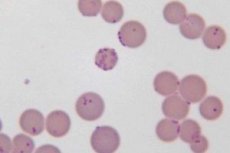Mycoplasmosis and ureaplasmosis
Last reviewed: 23.04.2024

All iLive content is medically reviewed or fact checked to ensure as much factual accuracy as possible.
We have strict sourcing guidelines and only link to reputable media sites, academic research institutions and, whenever possible, medically peer reviewed studies. Note that the numbers in parentheses ([1], [2], etc.) are clickable links to these studies.
If you feel that any of our content is inaccurate, out-of-date, or otherwise questionable, please select it and press Ctrl + Enter.

Mycoplasmosis and ureaplasmosis are widespread among the population. They are transmitted during sexual intercourse.
The difficulty in diagnosing mycoplasmal infections, the prevalence of mycoplasmosis and the inadequacy of the therapy led to the predominance of these infections over "classical" venereal diseases.
Causes of the mycoplasmosis
It has been established that man is the natural master of at least 14 species of mycoplasmas. Four species (Mycoplasma pneumoniae, Mycoplasma hominis, Mycoplasma genitalium, Ureaplasma urealyticum) are pathogenic to humans, however, their frequent detection in practically healthy individuals makes it difficult to decide the role of these microorganisms in the etiology and pathogenesis of diseases of the urogenital tract.
Symptoms of the mycoplasmosis
Symptoms of mycoplasmal infection do not have pathognomonic signs. The clinical symptoms of non-gonococcal urethritis, endometritis, spontaneous abortion, neonatal sepsis, in which M. Hominis, M. Genitalium, and U. Urealyticum have been isolated in monocultures are described.
The greatest danger of mycoplasmal and ureaplasmal infections is for pregnant women, in whom they occur with the greatest frequency and lead not only to the development of pathological processes of the urogenital tract, but also to the defeat of the fertilized egg at different stages of its development, which in turn causes abortion of the fetus or formation intrauterine infection.
What's bothering you?
Forms
According to the modern classification of mycoplasma belong to the family Mycoplasmataceae (order Mycoplasmatales class Mollicutes). This family is divided into two genera: the genus Mycoplasma, which includes about 100 species, and the genus Ureaplasma (urea - urea, plasma - assuming any form), in which there are so far only 3 species. The main taxonomic feature of ureaplasma is their ability to hydrolyze urea.
What do need to examine?
What tests are needed?
Who to contact?
Drugs


 [
[